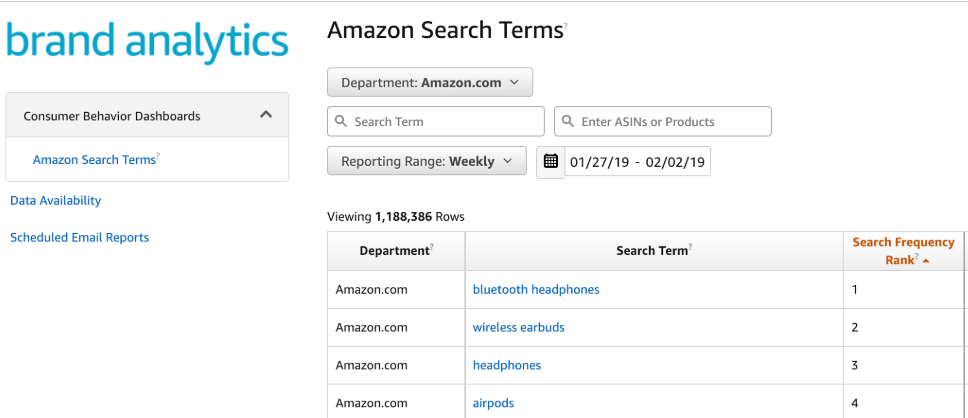10 Changes That Impacted Amazon Advertisers in 2019

2019 is coming to an end, and this year has seen no shortage of updates for Amazon sellers, vendors, and advertisers.
In this post, we’ll run through some of the most important Ad Console and operational updates that Amazon rolled out in 2019 — so you can stay ahead of the curve in 2020.
Sponsored Products targeting now lets you target your sponsored product ads based on:
One of the newest category refinement options is Prime eligibility. With Prime eligibility category refinement targeting, you can take your FBA Prime-enabled offer and target fulfilled by merchant (FBM), non-Prime eligible offers. This lets you target weaker competition with your product.
You can also target by price range and star ratings as well. If you have a particularly well-reviewed product, you can target products that are slightly worse-reviewed than yours. Consumers considering a 4-star product might want to know that you have a 4.8-star product available.

“Sponsored Products targeting has all the benefits of PDA targeting plus additional targeting features. PDA’s have been somewhat of a black box when it comes to identifying what is and isn’t working about your ad, which makes it difficult as advertisers to justify allocating much spend behind them,” Dylan Verburgt, Senior Marketplace Channel Analyst at Tinuiti said.
“With ASIN level performance, you can optimize your ad to only target products that are converting. Having the ability to target products based on a price range or star rating will allow advertisers to more easily provide a sophisticated and accurate targeting approach by offering enticing deals rather than hand-selecting products or using a blanketed approach via expanded targeting.”
These are powerful and exciting targeting refinement updates, but many advertisers are wary of the added layers of complexity.
To help advertisers figure out where to start, Amazon provides suggested bid and suggested bid range at the product and category level. Suggested bids take some of the guesswork out of where to start.
With Sponsored Products targeting, you can now use negative targeting options. Negative targeting lets you exclude brands and products where you don’t want your ads to appear. You can create a list of specific brands and products to exclude based on where you think your products will (or won’t) perform well.
If you have a Seller Central, Vendor Central, or Ad Console account advertising multiple brands, you can use negative targeting to make sure one brand’s products don’t show up on another brand’s product detail page.
You can “harvest” target ASINs the same way you harvest keywords.
To keyword harvest:
You identify the areas where your products are successful, then advertise in those areas more aggressively.
ASINs will now show up in your search term report from automatic campaigns. For best results, we recommend keeping category- and product-targeting campaigns in separate campaigns.
Run the harvesting process for about two to four weeks; the more data you have, the more actionable your data is. Then, add those harvested ASINs to product targeting campaigns. We call this “offensive” product targeting; you offensively go after that detail page and give consumers the opportunity to see your offering when they’re looking at a similar product.
You can also add non-converting, high-spend ASINs to negative targeting to minimize wasted spend.
Defensive product targeting campaigns let you occupy the Sponsored Products carousel real estate on your own detail pages. This defends this space from your competitors running offensive campaigns. Defensive product targeting also works for cross-selling and upselling, especially if you want people to know about other products that are in your catalog.
This lets you launch new products more aggressively. If you launch a new product, that ASIN is coming out of the gates with no search volume and no reviews. It can be really difficult for people to discover that product unless you’re advertising it.
You can place those new products as “defensive” products on the detail page of your best-selling products. That new ASIN can piggyback on the success of an established ASIN, which helps you get more traffic to that new product.
If you enable ASIN optimization, Amazon will automatically select the most contextually relevant products from your store or landing page to feature in your creative.
According to Pat Petriello, Director of Amazon Strategy at Tinuiti, ASINs are chosen based on a weighted combination of both the relevancy model (mapping search queries to ASIN product content) and the performance metrics of the advertiser’s store (best selling and most-clicked ASINs on landing pages).

To use Sponsored Brands, you need to be part of Amazon’s Brand Registry. Sponsored Brands appear at the top of the SERP (search engine result page) on desktop and mobile. Sponsored Brands feature your brand logo, a headline, and up to three of your products. They drive traffic to your store, a custom landing page, or a simple landing page with a list of products you want people to see.
What’s new: the functionality of ASIN-optimized Sponsored Brands. This allows Amazon to look at the pool of products on your landing page and determine which product most closely matches the customer query.
So far, the results have been based on product types and categories. While this functionality is new, keep an eye on this if you run ads through Sponsored Brands.
Product display ads (PDA) show up under the “Buy” box on detail pages. Amazon rolled this legacy PDA functionality into the beta of Sponsored Display ad units. Sponsored Display ads can appear to audiences both on Amazon and off. This lets you grow your total opportunity size from just people on Amazon to essentially the entire internet of interested shoppers.
On Seller Central, you can only use product targeting. If somebody visited your detail page and didn’t purchase, you can remarket to them.
On Ad Console, you have access to product targeting and audience targeting. You can target audiences based on interests and which product pages they’ve viewed, as while as remarketing.
“While Sponsored Display doesn’t offer as many optimization levers as DSP, it’s a good option for brands to quickly setup display ads on a limited budget.”
– Maddie Kaseeska, Amazon Strategist at Tinuiti

Amazon Brand Analytics now allows you to access demographic reporting in Vendor Central and Seller Central. The demographic data shows:
That information lets you go back and say, “if people are foregoing my product to buy an alternative product, maybe that’s a product I need to be offensive product targeting.” You can find this in your reporting suite in Seller Central.

On the operational side, virtual kits and bundles can help you create “new inventory” from the same products. Products are stored individually, and product combinations are created only in software. The physical products are combined into kits and bundles at the time of sale and shipment.
You can create more ASINs from the same number of SKUs, which can lead to more search results from a limited product set — and more search results leads to more sales.
Amazon launched a limited beta for FBA sellers in 2019 and is expected to expand in 2020.
Another operational update: dropshipping. Dropshipping solves the age-old problem of how to sell products without investing in inventory, dropshipping creates new challenges when selling on Amazon:
The solution? Automated dropshipping. Automated dropshipping keeps all of your supplier connections in one place, meaning you only need to connect one inventory source to your Amazon store. Automated dropshipping automatically updates proï¬t margins for fluctuating cost of goods and automates the return of tracking information to maintain seller ratings.
Which Amazon 2019 updates were you most excited about? What are you looking forward to in 2020? Let us know in the comments!
